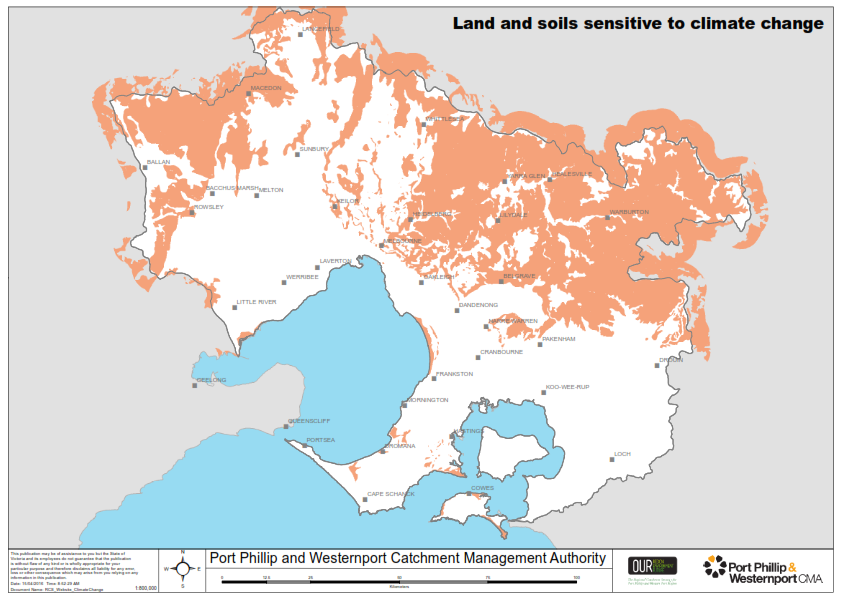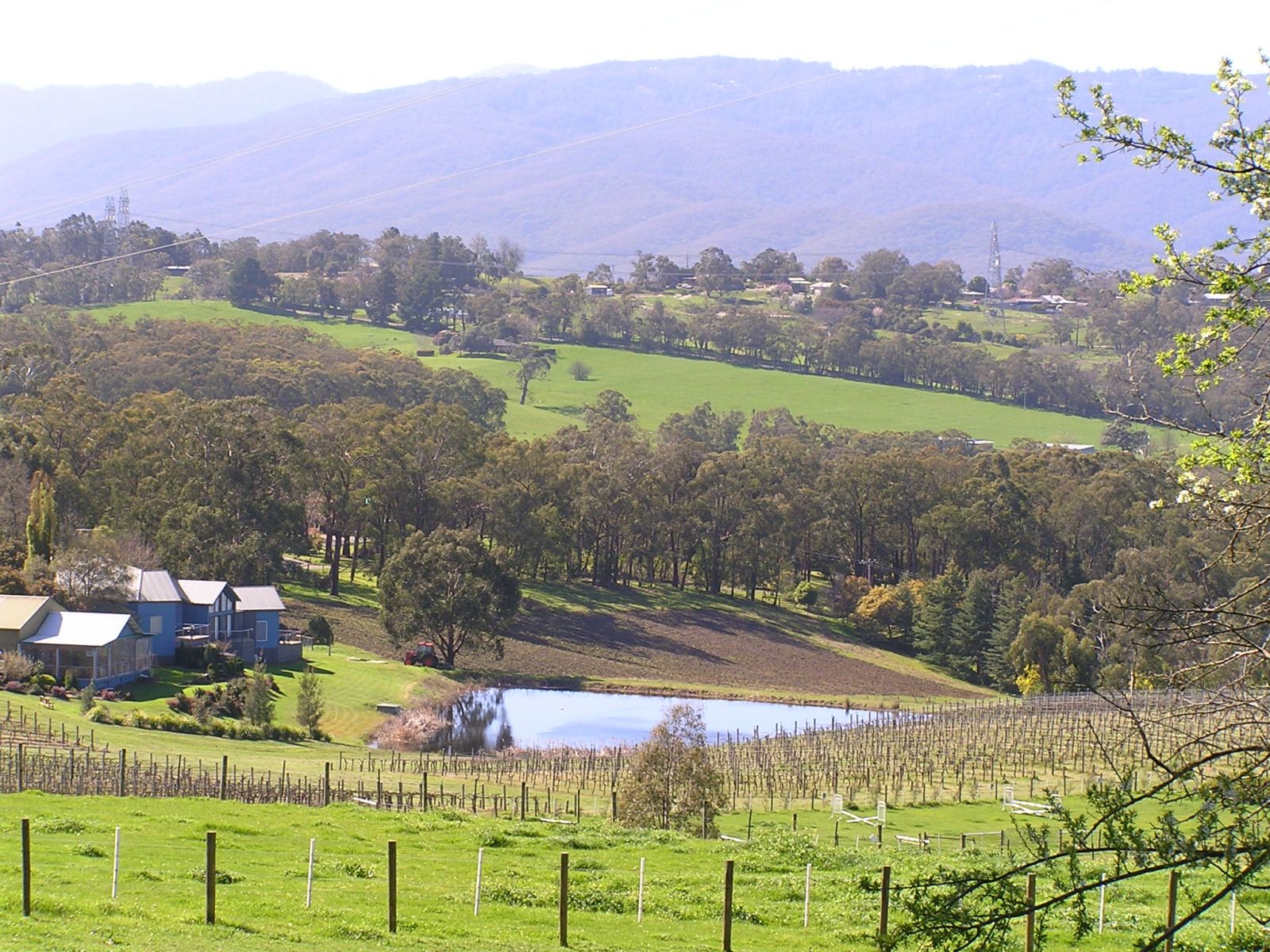The Port Phillip and Western Port region's Hinterland comprises of approximately 670,000 hectares of land zoned as Farm, Green Wedge, Rural Conservation, Rural Living or a relevant Special Use.
Climate change will affect primary production and natural environments across this region’s Hinterland. Declining rainfall and water shortages will be particular pressures but more frequent fire-weather and losses in natural values may erode the amenity value of the region’s many hobby farms and ‘rural living’ zones.
Climate change is expected to expose the Hinterland’s land, soil and water resources to:
- Lower and more erratic rainfall.
- Declining and more erratic waterway flows.
- Higher evaporation.
- Lower soil moisture.
- Increased fire-weather frequency and intensity.
Climate change effects on the region’s farming and horticulture industries could include:
- Faster plant growth as a result of the increased carbon dioxide*.
- Changes in the suitability of land for particular crops*.
- Increased extreme event impacts on productivity and production costs*.
- Increased production volatility in response to extreme weather*.
- Rising water costs and declining water security*.
- Risks of increased pests and diseases*.
Map: Land and soil sensitive to climate change
Description:
This static map layer below depicts land and soil that were assigned a ‘very high’ or ‘catastrophic’ rating for its likely sensitivity to climate change (changes in annual rainfall and/or changes to maximum temperatures over the spring and summer period) under the Representative Concentration Pathway (RCP) 4.5 scenario. Sensitive land and soil is likely to be the first affected by climate change. To view specific points of interest, please click on the map tab which displays an interactive map of soils sensitive to climate change.

RCP 4.5 is considered to be a moderate scenario of future carbon emissions. Under the RCP 4.5 scenario, it is predicted that annual average rainfall could reduce by 16-34mm below the 1986-2005 average and maximum summer temperature could increase by 2-2.9 degrees above the 1986-2005 average. However, actual future changes could be smaller or larger depending on the actual effects of rising atmospheric carbon dioxide and the success of global carbon dioxide mitigation.
The above information was derived from Dunlop, M, Parris, H, Ryan, P, Kroon, F, 2013, Climate-ready conservation objectives: a scoping study, National Climate Change Adaptation Facility, Gold Coast, Australia.
Please visit the Port Phillip & Westernport Regional Catchment Strategy for more information about hinterland in this region.

